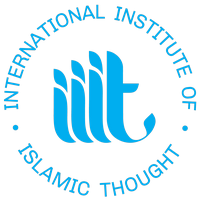THE IDEOLOGICAL LURE OF “ISMS”

Perhaps the most prominent example of the contrast between positive and negative concepts is the way in which the abstract noun suffix – ism, when added to a word, so often fundamentally changes its orientation, tending to indicate an abstract ideology or system of thought rather than a concrete experience. Differences in meaning in pairs of related words are not only indicated by the “-ism” suffix, but by other suffixes: one might distinguish, for example, between religion and religiosity, unity and uniformity, idea and ideology. The word “ideology” first appears in 1796 borrowed from French “idéologie,” the study or science of ideas or the political or social philosophy of a nation. The French coined the word during their secularizing Revolution. John Adams (in some writings of 1813) mentions the usage of the word by Napoleon Bonaparte himself to mean “impractical theorizing.” Its definition as a set of ideas, doctrines, or beliefs was first recorded in English in 1909.
Thus far, we have already encountered various instances of the shift in meaning effected by the “-ism” suffix and its ideological import: community/communitarianism, liberty/libertinism, and we might also point to other contrasting pairs: tradition/traditionalism, progress/progressivism, modernity/modernism, fundamental/fundamentalism, morality/moralism, scripture/scripturalism, “the letter”/literalism, form/formalism, duality/dualism, relativity/relativism, law/legalism, and totality/totalitarianism. We have argued for the need to distinguish the authority of divine revelation which liberates the human soul from the authoritarianism imposed by narrow human formulations which imprison it; and the existence of absolute and timeless truths from the tyranny of an absolutism which obliterates all context. At the same time, we need to distinguish identity from tribalism and sectarianism, diversity from division, and unity (in diversity) from the uniformity of mono-cultural attitudes which dichotomize reality into competing unilateral or unipolar worldviews and ultimately into the isolating pathology of civilizational supremacism.
Similarly, the qualities of individuality need not be conflated with the individualism which gives man no point of reference beyond his own ego and the gratification of his own individual desires. The expression of individuality, which is nothing more than the realization and expression of the personal uniqueness of each human being, is not in opposition to the needs of the community. Quite the contrary, in an age of increasingly sterile conformity, uniformity, and standardization, the contribution of creative individuals who are realizing their individual potential has never been needed more as a means of enriching and revitalizing communities. Communitarianism will always suspect the individual of individualism, but a living community will respect and nurture individuality as a valid expression of diversity while being able to balance individual needs and modes of expression with collective rights.
Other important distinctions can be made between reason and rationalism, intellect and intellectualism, synthesis and syncretism, matter and materialism, science and scientism, and so on. Reference was made in Chapter 3 to Muhammad Asad’s tribute to the modern “age of science” which he attributes to the spirit of “intellectual curiosity and independent inquiry” ignited by the “insistence on knowledge and consciousness” in the Qur’an. He did not, however, intend this to be taken as an endorsement of the reductionism and materialism entailed in dogmatic scientism, which overstretches the ability of the scientific method to encompass all of reality and “explain” it through quantitative means, even to the extent of upholding that observable reality is the only reality. On the contrary, the limitations of the scientific method are clearly noted with reference to the term alghayb in the Qur’anic verse stating that “This Divine Writ – let there be no doubt about it – is a guidance for all the God-conscious who believe in the existence of that which is beyond the reach of human perception” (2:1-3). Asad comments as follows:
Al-ghayb is used in the Qur’an to denote all those sectors or phases of reality which lie beyond the range of human perception and cannot, therefore, be proved or disproved by scientific observation or even adequately comprised within the accepted categories of speculative thought. Only a person who is convinced that the ultimate reality comprises far more than our observable environment can attain to belief in God, and, thus, to a belief that life has meaning and purpose.
In his commentary on the first two verses of Sūrat al-Takāthur in the Qur’an (“You are obsessed by greed for more and more until you go down to your graves”), Asad also draws attention to the damage wrought by “the tendencies which have come to dominate all human societies in our technological age.” These verses, he notes, denote “man’s obsessive striving for more and more comforts, more material goods, greater power over his fellow-men or over nature, and unceasing technological progress. A passionate pursuit of such endeavors, to the exclusion of everything else, bars man from all spiritual insight and, hence, from the acceptance of any restrictions and inhibitions based on purely moral values – with the result that not only individuals but whole societies gradually lose all inner stability and, thus, all chance of happiness.”
Not all “isms” are necessarily negative, even though, as Ziauddin Sardar observes, there are many of them that “have brought us to the edge of chaos.” The extent to which one sees any of them as relatively positive or negative of course depends on one’s perspective, and our own preferences will inevitably emerge as our glossary expands. We will want to emphasize, for example, the positive role of pluralism and multiculturalism in the Integration of Knowledge. At the same time, we will need to question whether other “-isms” which tend to be demonized can be conceptualized in a more nuanced way. A good example is the word “relativism,” described in Chapter 3 as “a useful bugbear of traditionalist ideologues and cultural supremacists, as well as some religionists, suggesting both chronic disorientation and moral laxity.” It is worth repeating here Jacques Barzun’s reference to it as a “bogey word,” “a cliché that stands for the cause of every laxity,” and “a slippery slope of cunning justifications and satanic whisperings, taking us further and further away from the certainty of eternal truths and absolute values.” As I suggested in response to Barzun’s insight, the root of the word might be more usefully seen as “a continuum ranging from a value-free ‘anything goes’ mentality which may indeed be rootless in a negative sense, to a very positive ability to form ‘relationship,’ whether with ideas or with people.” Awareness of relativity and concern for relationship need not imply a degree of relativism that totally abolishes all immutable laws, eternal truths, and absolute values. As Diana Eck, the Director of the Harvard Pluralism Project, points out, “A thoughtful relativist is able to point out the many ways in which our cognitive and moral understandings are relative to our historical, cultural, and ideological contexts” and, to that extent, the thoughtful relativist is a close cousin of the pluralist, someone who is able to relate to and engage in a positive and respectful way with people of other communities and able to show how absolutism can give rise to bigotry.
In conceptualizing the Integration of Knowledge project, Sardar navigates the related issues of ideology, relativism, and pluralism as follows:
The overall aim here is to guard against ideological constructions of Islam as well as absolute relativism promoted so eagerly in postmodernist thought – and move towards some notion of plurality. The original French notion of ideology saw it as science of ideas and their truth and error but the term rapidly came to signify a total system of thought, emotion, and attitude to humans, society, and everything. Islamic movements, such as the Muslim Brotherhood and Jamaat-e-Islami, have often constructed Islam as an all-embracing ideology, a total and totalistic system that allows for no dissent, alternative perspectives, or plurality of any kind to flourish. Relativism is valuable when it promotes different viewpoints, perceptions, and considerations, and even when it suggests that different views may not necessarily have absolute truth or validity. But it becomes a problem when it suggests, as in postmodernism, that there are no truths at all or nothing that can provide us with meaning.
In short, just as we might distinguish the creative world of ideas from the abstract constructs of ideology, we must also be aware of the potential trap of a brand of relativism which abolishes all stable meaning.
This article is an excerpt from: Ziauddin Sardar & Jeremy Henzell-Thomas, Rethinking Reform in Higher Education (London/Washington: IIIT, 2017), pp. 199-203.
The views expressed in this article are those of the author and do not necessarily reflect the views of the International Institute of Islamic Thought (IIIT).




